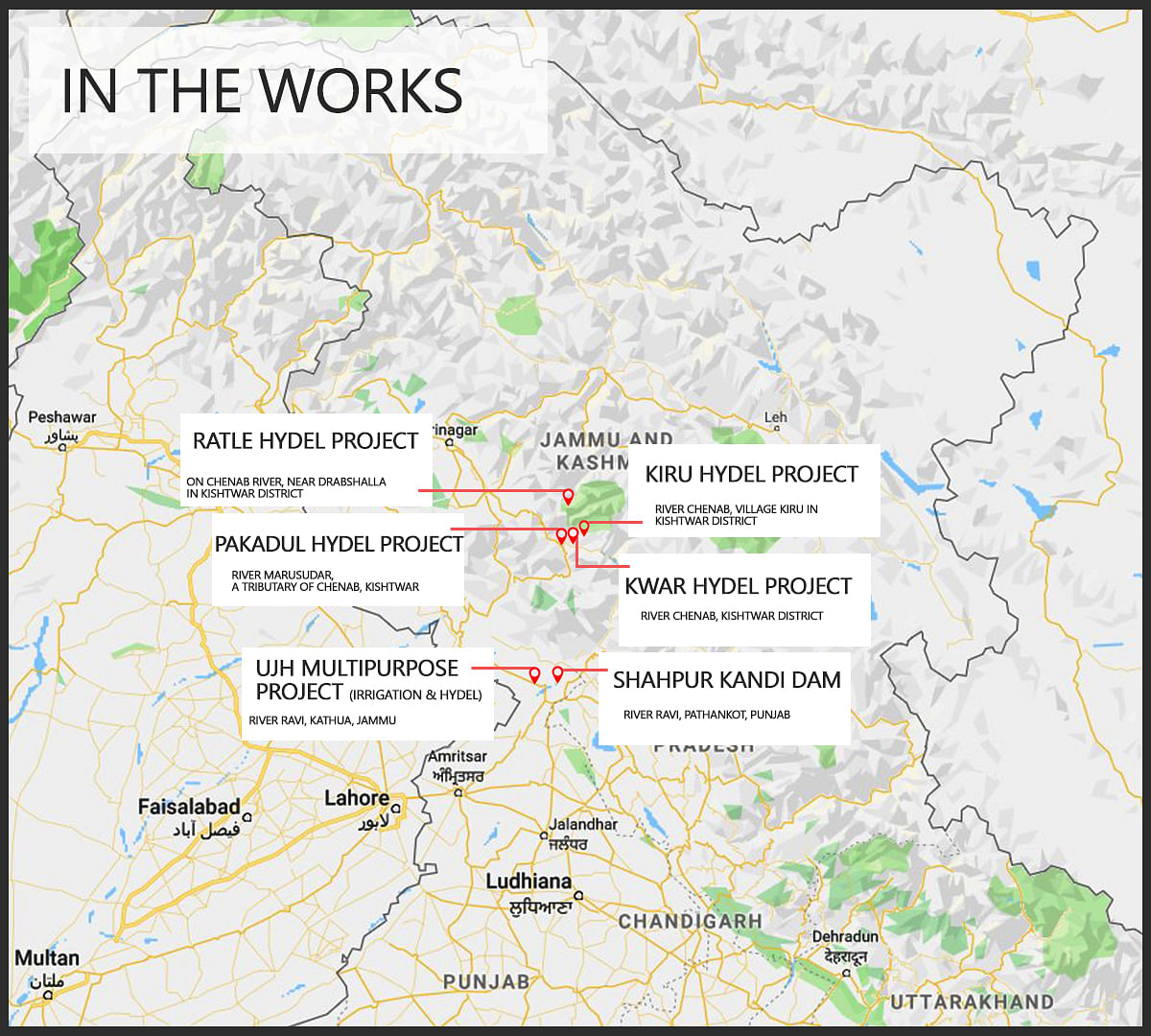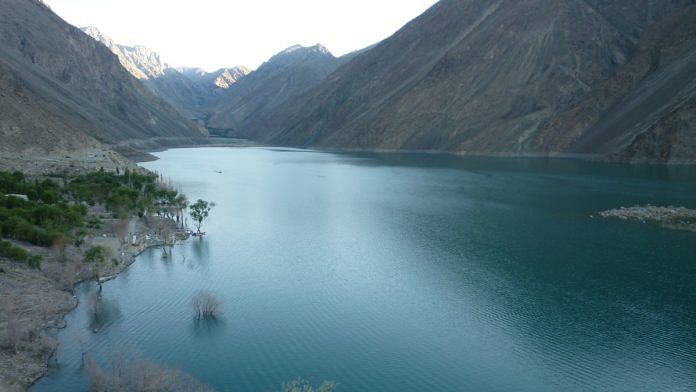New Delhi: The Modi government is stepping up work on infrastructure projects that will help India better utilise Indus waters currently flowing across the border, with the efforts coming amid fresh tensions between New Delhi and Islamabad.
The projects include dams and hydropower plants, and aim to harness the waters India is guaranteed under the 1960 Indus Waters Treaty with Pakistan, but hasn’t been able to utilise.
The treaty, brokered by the World Bank, outlines how India and Pakistan will utilise the six rivers of the shared Indus river system. While the western rivers of the system — Indus, Jhelum and Chenab — fall in Pakistan’s share, the three eastern ones — Ravi, Beas and Sutlej — are to be used by India.
Additionally, the treaty allows India to use a part of the western rivers for non-consumptive uses like agriculture and hydropower generation.
Officials of the Union Jal Shakti Ministry said the infrastructure projects coming up in the region will get a big boost with Jammu & Kashmir coming under the administrative control of the Centre.
“There is constant central monitoring. This will expedite work on these projects, which are in various stages of implementation,” said one of the officials.
The six projects include four hydropower plants — 850 MW Ratle, 1,000 MW Pakadul, 624 MW Kiru and 540 MW Kwar — on the Chenab.

The other two are the Shahpur Kandi dam, which is being developed on the Ravi, and a multipurpose project on the Ujh, a tributary of the Ravi, for irrigation and hydropower.
Another government official told ThePrint that while the first four projects are in various stages of implementation, work has already started on the Shahpur Kandi dam.
Meanwhile, the detailed project report on the multipurpose project planned on the Ujh, a tributary of the Ravi, has been appraised by the Central Water Commission (CWC), which falls under the Jal Shakti Ministry.
“Work is yet to start on the project as, currently, the J&K government and the Centre are trying to see if the area for irrigation can be expanded,” a third official of the Union Jal Shakti Ministry said.
There is also a seventh project that is still at the proposal stage — to build a barrage to distribute unutilised Ujh waters by linking the Ravi and the Beas rivers. This will be called the second Ravi-Beas link — the first was constructed in 1957 to utilise the water from the Ravi and the Beas through a barrage on the Madhopur river.
The CWC and the Punjab government are currently conducting a feasibility study on the project
“The project will benefit people in Punjab, Haryana and Rajasthan,” the official added. “It is still at an initial stage. We are studying its various aspects before approval.”
The comments of the officials come just a week after Union Jal Shakti Minister Gajendra Singh Shekhawat was quoted as saying that India was working on “priority” to see how the share of its water flowing into Pakistan can be “diverted for use by our farmers, industries and people”.
The water that India can use from the western rivers has the potential to generate 18,569 MW of hydropower. However, as on date, India has only developed 3,500 MW of hydel generation capacity.
Also, India can use water to irrigate 13.4 lakh acres of land, but is currently deploying it for just 8 lakh acres. However, efforts by India to tap its share of the western rivers are viewed with suspicion in Pakistan, which got the bulk of the Indus waters under the 1960 treaty.
Also read: 100 mn hectares going to waste, govt to bring land & water schemes together to fix problem
Getting work in high gear
The majority of these projects were conceptualised more than a decade ago, but had failed to take off, primarily on account of delays in statutory approvals and disputes between states.
“Work at the Shahpur Kandi dam was stopped in 2014 following a dispute between the Jammu & Kashmir and Punjab governments,” the second official said. “The project was approved way back in 2001. The Centre stepped in to resolve the issues and, in December 2018, the Union cabinet approved the project.”
Once complete, the Rs 485.38 crore project will check the unutilised water that goes to Pakistan through Madhopur headworks downstream.
Similarly, the Ratle project was conceptualised in mid-2000 but got caught in a contractual dispute.
“The J&K government and (Centre-owned hydropower generator) NHPC finally signed an MoU in February 2019 following a meeting called by the Prime Minister’s Office (PMO),” a fourth official said.
The Pakadul project, which is under construction now, was stalled because of a contractual dispute with the then state government.
According to the officials ThePrint spoke to, these projects were fast-tracked in the immediate aftermath of the September 2016 Uri attack, which saw Pakistani terrorists kill 18 soldiers at an Army base in Kashmir. PM Narendra Modi had reportedly warned at the time that “blood and water can’t flow together”.
Modi subsequently reviewed the Indus Water Treaty and set up a task force under Nripendra Misra, the principal secretary to the PM, to monitor the implementation of projects.
The Indus Waters Treaty
All the projects that are coming up are within the provisions of the Indus Waters Treaty.
Under the treaty, India gets unrestricted use of over approximately 33 million acre-feet (MAF) water from the three eastern rivers, while Pakistan gets over 135 MAF from the three western ones.
Currently, India utilises around 95 per cent of its share of water in the eastern rivers through a network of dams, including the Bhakra on Satluj, Ranjit Sagar on Ravi, and Pong and Pandoh on Beas.
“Shahpur Kandi and the two Ujh projects will help India tap the remaining 5 per cent of water that currently flows into Pakistan, said the third official.
India and Pakistan are currently locked in a fresh diplomatic tussle over the Modi government’s decision to remove Article 370 from Kashmir, which Islamabad stakes claim to. Tensions have been high since February, when a Kashmiri member of the Pakistan-based Jaish-e-Mohammed killed 40 personnel of the CRPF in a suicide attack, and India retaliated with airstrikes at the terrorist group’s camps deep inside Pakistan.
Also read: Modi govt’s flagship water scheme Jal Jeevan Mission gets Rs 3.35 lakh crore
This is an updated version of the report







And Pakistan will be wiped out of world map. ???????
Let them do. When the war starts, all constructions become destructions.